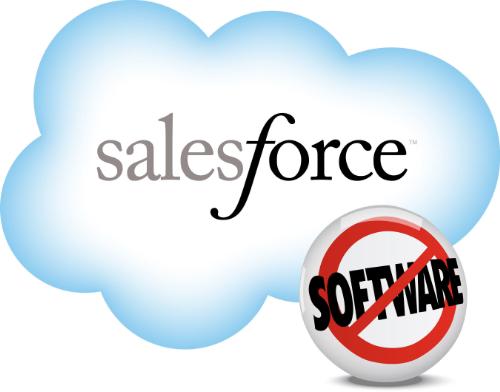
Salesforce.com is making its foray into the database market.
The company, better known for its online CRM (customer relationship management) and sales force automation software, has unveiled a database product known as Database.com that allows developers to focus on building applications, rather than manage database systems.
The database, which has been used by over 87,000 Salesforce customers in the past 11 years, will be available to businesses running cloud-based applications developed using various programming languages such as Java, PHP and .NET.
Besides supporting apps built for Android and Apple iOS based devices, Database.com also supports the database requirements of applications hosted on cloud-based platforms including Force.com. Amazon Web Services (AWS) and Microsoft’s Windows Azure.
According to Salesforce.com, such apps can retrieve data on Database.com using APIs through the Internet. The cloud database is also built with scalability in mind, with the ability to support data transactions for apps that draw hundreds of thousands of users.
The database also supports social media applications with a social data model that holds and manages data for social network feeds, user profiles, status updates, and a “following” model for all records. Through social APIs, for example, developers can specify followers for database records or request data feeds to display real-time data updates.
But here’s the catch: enterprises would need to be familiar with Salesforce.com’s SOQL (Salesforce Object Query Language) syntax inherent in the cloud pioneer’s Apex platform.
While Apex code is conceptually close to stored procedure languages common in traditional database environments such as PL/SQL, developers more familiar with traditional SQL queries may have to overcome a learning curve.
The move to entice non-Salesforce.com customers with a database is hardly surprising, given that the company has been trying to grow its business beyond on-demand CRM in recent years.
By offering a cloud database, it’s obvious that Salesforce wants to lure developers to Force.com, its cloud platform for business applications. So far, apps that have been developed on Force.com include Lotus Notes replacement apps and ERP (enterprise resource planning) packages.
Database.com is not likely to impact the likes of Amazon Web Services which offers EC2 instances for running a variety of databases such as IBM DB2, Oracle Database 11g, MySQL, PostgreSQL, Sybase and Microsoft SQL Server — all of which are all supported by an established pool of database administrators.
For AWS customers who are considering moving their databases onto the Apex platform, the time and effort in managing an additional cloud vendor for their databases is a potential deterrent.
Database.com will be available as a standalone service from next year. The service, including database access, file storage and automatic administration, will be available for free for three users, with up to 100,000 records and 50,000 transactions per month.
Subsequently, it will cost US$10 a month for each set of 100,000 records, and an additional US$10 per month for the next 150,000 transactions.
And if you require user identity, authentication and row-level security access controls, be prepared to cough up an additional US$10 per user, per month.




